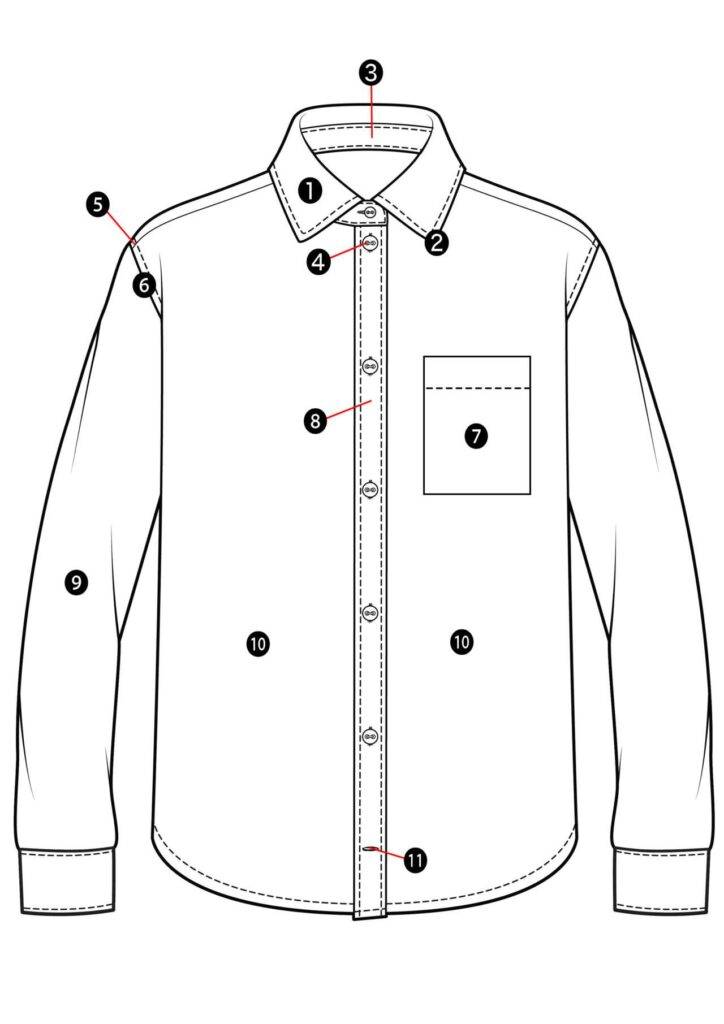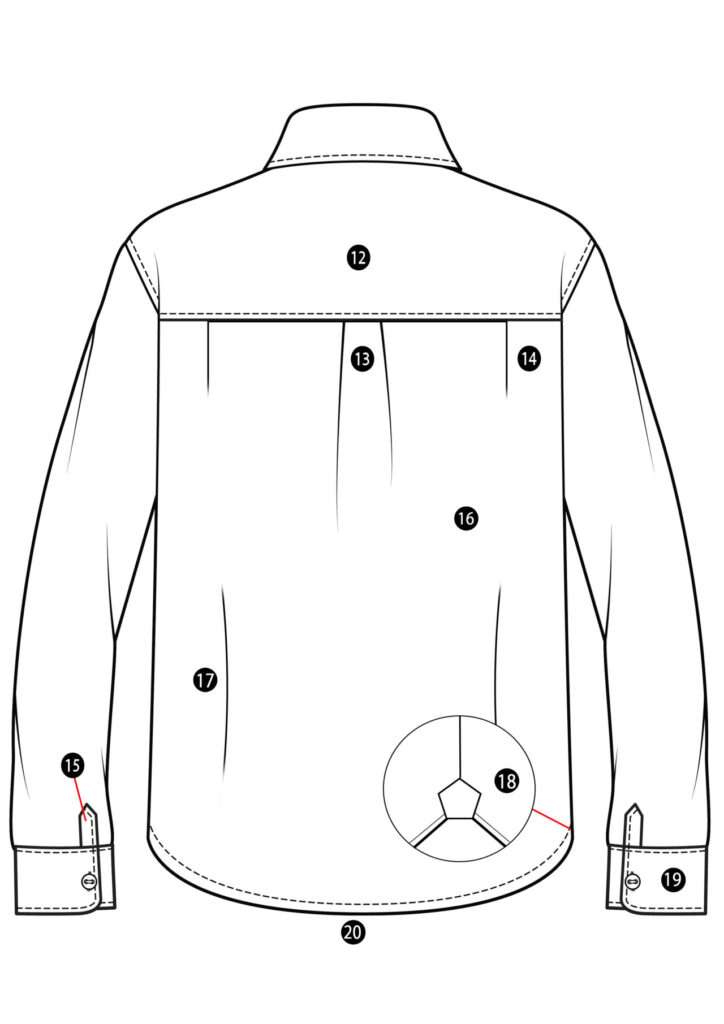In the realm of clothing, a collar serves as the section of a shirt, dress, coat, or blouse that encircles or frames the neck. It distinguishes itself from other necklines, such as revers and lapels, within the domain of garment construction. This distinction arises from the fact that a collar is fashioned from a separate piece of fabric, distinct from the folded or cut portion of the same fabric utilized for the main body of the attire.Collars can either be permanently affixed to the main body of the garment through stitching or designed to be detachable.Contemporary shirt collars trace their origins back to the rectangular linen bands that adorned the necks of 16th-century shirts. Alongside these attached ruffled collars, separate ruffs emerged during the mid-16th century. They were typically used to facilitate starching and other delicate finishing techniques or to simplify the laundering process for collars.Throughout the medieval era and intermittently thereafter, individuals wore decorative collars as a form of jewelry.
襟はシャツ、ドレス、コート、またはブラウスの首を囲み縁取る部分として機能します。構造上台襟(バンド・スタンド)やラペルなど他のネックラインとは区別されます。この区分する理由は襟が服の本体に使用される同じ生地の折り返しまたは裁断された部分とは異なる別の生地から作られているからです。 襟はステッチによって衣服本体に固定されているものと取り外し可能なデザインのもの時代によって存在してます。 現代のシャツの襟は16世紀のシャツの首を飾った長方形のリネンバンドまで起源を遡ることができます。このような付属のフリル付き襟と並んで16世紀半ばには独立したフリルも存在してしました。糊付けなどの繊細な仕上げを容易にするためあるいは襟の洗濯工程を簡略化するために使用されました。 中世を通じてまたその後も断続的に装飾的な襟は宝飾品として着用されています。それが今日きちんとした格好の時には襟付きのシャツという潜在的な意識へ結びついています。現代では既存のレギュラーカラーをベースに多くのバリエーションが存在します。

